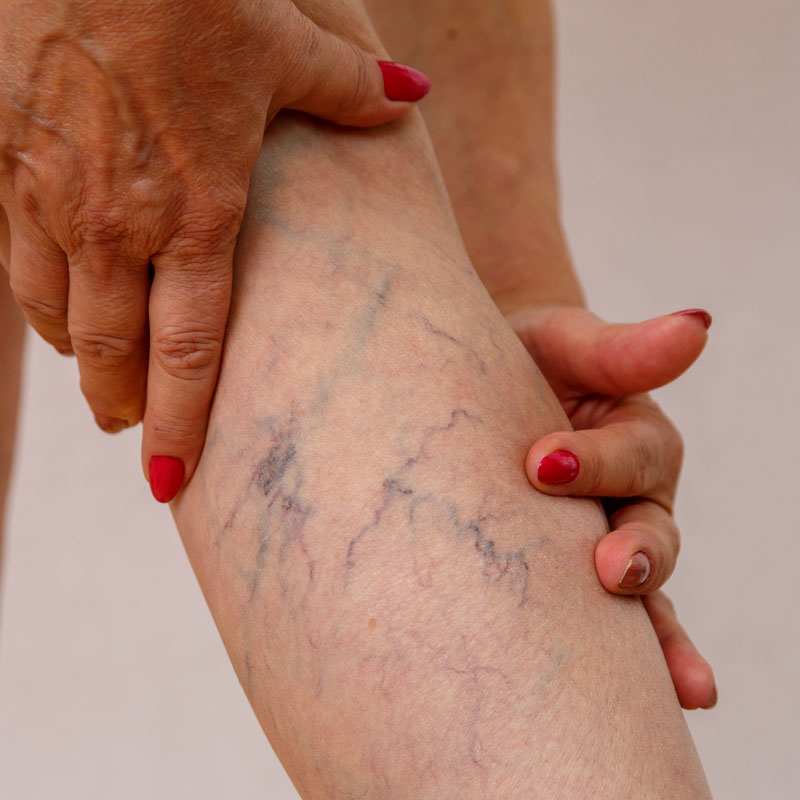Venous Insufficiency
Causes, Symptoms, and Treatments
As people get older, they may come across more and more ailments, including vein disease. Although some of them may simply cause cosmetic deficiencies, others may be a sign of more serious health problems. A common ailment of the vein is venous insufficiency. Read on to find out more about this venous disease.

What Is Venous Insufficiency?
Venous insufficiency is a general term used to describe when your veins are having trouble carrying blood back from your body to your heart. Although it occurs in all of the limbs of the body, venous insufficiency happens prominently in the legs; this is because gravity causes blood to pool in the legs, making it unable to flow back to the heart.
What Causes Venous Insufficiency?
Venous insufficiency is usually caused by blood clots (deep vein thrombosis) and varicose veins. They can definitely arise when you have previously had blood clots and varicose veins. When blood clots occur and obstruct blood flow, blood then builds up behind the clot. Varicose veins cause this condition because the valves are missing or impaired. Weakness in the leg muscles that are responsible for squeezing the blood to the heart can also cause venous insufficiency.
Although both men and women can get venous insufficiency, this condition is more common in women. Risk factors for both sexes include blood clots, obesity, pregnancy, smoking, varicose veins, cancer, muscle weakness, swelling of superficial veins, family history, and lack of exercise.
How Is Venous Insufficiency Treated?
Venous insufficiency treatment depends on your age, symptoms, severity, and how you tolerate medications and procedures. The most common and non-invasive treatment is prescription-wear compression stockings. These increase pressure on your legs and improve blood flow, which also reduces swelling in your legs. Other steps to treatment include regular exercise, diuretics, anticoagulants, pentoxifylline, ambulatory phlebectomy (an outpatient procedure), sclerotherapy, catheter procedures, and surgery. The type of surgery you require will depend on your personal situation. Surgery can involve surgical repair of your veins, removing your veins, endoscopic surgery, vein bypass, or laser surgery. Many of the more invasive procedures are avoided unless your venous insufficiency is a serious case.
How Is Venous Insufficiency Diagnosed?
A highly experienced doctor will want to do a physical examination and take a complete medical history to figure out if the patient has venous insufficiency. Under most circumstances, he/she will order some imaging tests to pinpoint the source of the problem. These tests may include but are not limited to a Venogram (Which is an x-ray test that involves injecting x-ray contrast material (dye) into a vein to shows how blood flows through your veins. This allows an experienced physician such as Dr. Kulbhushan K. Sharma to determine the condition of your veins. An x-ray (radiograph) is a noninvasive medical test that helps physicians diagnose and treat medical conditions.
Also, there is a duplex ultrasound which is a test to see how blood moves through your arteries and veins. The test is done in the ultrasound or radiology department or in a peripheral vascular lab.
The Examination Process
- A water-soluble gel is placed on a handheld device called a transducer. This device directs high-frequency sound waves to the artery or veins being tested.
- Blood pressure cuffs may be put around different parts of the body, including the thigh, calf, ankle, and different points along the arm.
- A paste is applied to the skin over the arteries being examined. Images are created as the transducer is moved over each area.
What Are the Symptoms of Venous Insufficiency?
Venous insufficiency symptoms include edema (swelling in your legs), pain when you stand or raise your legs, leg cramps, itchy legs, weak legs, aching legs, throbbing legs, thickening of skin around your legs or ankles, leg ulcers, varicose veins, skin that is changing colors, and a feeling of tightness in your calves. If you experience any of these symptoms regularly, you may be suffering from chronic venous insufficiency. In this case, you should consult with a vascular professional to get a professional diagnosis and to get proper treatment.
Customer Reviews
I really love Arizona Vein & Laser Institute. The staff there were friendly and professional. They were courteous, informative and gentle with their patients. I would highly recommend this institute.
Franny greeted me at the reception desk, and she was quite pleasant. Erica took me back for my ultrasound, and she explained everything she was looking for during my testing. Quite pleasant. And I saw the pa, rick. He took his time and answered all my questions and told me how he could help with different options for procedures. Quite a good experience all around. I will be going back for a procedure to relieve my pain. I highly recommend this office.
